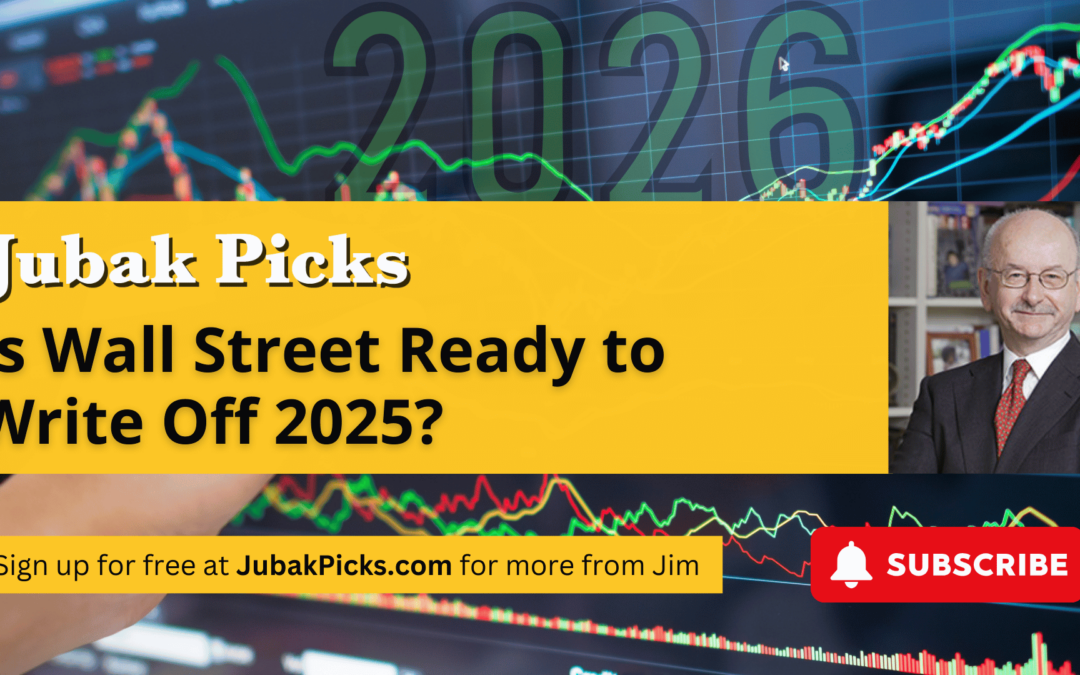All Posts

Are they real or more vapor-tariffs?
Semiconductor chips and drugs are set to face higher duties, Trump told reporters at a news conference on Tuesday.“It’ll be 25% and higher, and it’ll go very substantially higher over the course of a year.” Asked if he had decided the rate of a threatened tariff on cars from overseas, Trump said he would “probably” announce that on 2 April, “but it’ll be in the neighborhood of 25%”. But are these “announcement’s real?

Saturday Night Quarterback says, For the week ahead expect…
i expect a significant check on last week’s stock market optimism after a wretched retail sales report forJanuary. The slump was so deep–the biggest drop in nearly two years–that it bolstered hopes that the economy was weak enough–yep, another bad news is good news moment–that the Federal Reserve would still deliver an interest rate cut in September. The drop, however, could have been a reaction to California wildfires and winter storms deep into the South.
In other words, the big decline could have had nothing to do with a slowdown in the economy or in consumer buying. This week brings–after Monday’s Presidents’ Day market holiday–earnings reports and forward guidance–from some of the big names in retail. The important news to watch won’t be earnings for the just concluded December 2024 quarter, but forecasts for the March quarter and beyond. The big retail gorilla set to report is Walmart (WMT) before the open on Thursday, February 20.

Please watch my new YouTube video Hot Money moves: China buys gold
Today’s Hot Money Moves NOW is China Buys More Gold. Gold seems like a good asset to own right now but it’s also trading at record highs. So while gold is safe, especially if inflation goes up, how much higher do you expect gold to go? One thing to look at it is who is emerging as a buyer. Central banks have been buying gold to hedge risks and diversify, which has contributed to the record highs. Recently, the Chinese government announced that 10 big Chinese insurance companies will now be allowed to put up to 1% of their portfolios into gold. This hasn’t been allowed in the past and will provide about $27 billion for new gold buying. This is also just another sign that countries and businesses are looking to hedge risk by buying gold and it’s one of the safer places to be in an uncertain market.

More bad news on inflation
U.S. wholesale prices rose in January by more than forecast on higher food and energy costs. The producer price index for final demand climbed 0.4% from a month earlier. The Bureau of Labor Statistics revised December’s calculations upward to show a 0.5% increase in December.

Looking for another hedge? Silver is cheap, relative to gold; time to buy SLV
In the current market environment, with uncertainty running rampant and risk climbing, I want to find hedges against a downturn in U.S. stocks. Gold remains an attractive option even though it is trading near its nominal all-time high near $2900 an ounce. I think systemic risk–the odds that something fundamental will go wrong somewhere with the United States, China, and the European Union (through its exposure to Italy) are all worry hot spot–is on the rise. In the U.S. market alone, I see higher risk of a nasty mix higher inflation, slower growth, higher interest rates, and bigger government deficits.

Please watch my new YouTube video: Quick Pick Intuitive Surgical
Today’s Quick Pick is Intuitive Surgical (ISRG). While 2024 was a good year for the market, it wasn’t so great for the healthcare. The sector was down about .04%. Moderna was down 60%, CVS Health was down 50% and Walgreens was down 55%–but there were a few big winners. Intuitive Surgical, maker of the Da Vinci Robotic Surgical System, was the best performing healthcare stock in 2024. The stock went up 54.7% in 2024 and it’s gone up another 11.7% so far in 2025. At the moment, Morningstar says the stock is trading at 67% premium, with a high PE of around 80, so I’d suggest waiting to buy on a dip. I like this company because it’s growing revenue steadily, around 10% a year. I believe there is a good chance at getting a substantial market dip in 2025, and if that happens, take a look at this great long-term, steady performer in the healthcare sector. The stock has been a member of my long-term 50 Stocks Portfolio since January 28, 2019. the shares are up 257% since then as of the close on February 10.

Bond traders move to price in just one interest rate cut in 2025
Bond traders pushed out bets for the next Federal Reserve interest-rate cut to December on today’s increase in the CPI inflation rate. Swap contracts linked to future Fed decisions had before today anticipated a rate cut by September. Today’s swap pricing implies just one quarter-point cut this year. The yield on benchmark 10-year Treasury closed the day up 9 basis points to 4.62%%. Two-year Treasury yields, more sensitive than longer-maturity debt to Fed rate moves, rose by 7 basis points to 4.35%. “How can anyone justify any rate cuts with such inflationary pressure?,” Roger Landucci, a partner at Alphamatrix Finance in Geneva, told Bloomberg.

Oh, no! CPI inflation edged higher in January
CPI inflation rose by more than expected in January, as prices for groceries, housing and energy all picked up. The headline, all-items Consumer Price Index rose by 3.0% in January from a year earlier, the Labor Department reported Wednesday morning. That’s slightly above the 2.9% annual rate reported in December. The core index, which strips out volatile food and energy prices, was also higher, showing a 3.3% annual rate.

Please watch my new YouTube video: Is Wall Street ready to write off 2025?
Today’s video is Is Wall Street ready to write off 2025? I’m seeing a gradual move on Wall Street from “Trump doesn’t mean what he’s saying about tariffs and mass deportations” to “Maybe he is serious.” On Monday, Trump announced 25% tariffs on steel and aluminum with a starting date of March 4, on top of other tariffs already announced. You can see the shift in commentary from big banks like Bank of America and JP Morgan. These companies are now saying that things that will negatively affect growth are happening much more quickly than things that will support the stock prices. New tariffs and economic uncertainty, which has caused the Fed to refrain from cutting interest rates, are happening now and will be hitting the market. Tax cuts and deregulation, which could goose growth, will take longer to implement and we may not feel those positive effects until 2026 or later. Wall Street is basically saying that 2025 will be a year of negative risks, but 2026 may be more of an upside if tax cuts and deregulation do, indeed, happen.

Let’s not forget the debt ceiling! Treasury reduces size of next auctions
The U.S. Treasury Department cut the size of some benchmark bill auctions, as the government tries to stay below the legal limit of its borrowing authority under the debt ceiling. Treasury said it plans to sell $90 billion of four-week bills Thursday, $5 billion smaller than the previous offering of the maturity. It also announced $85 billion of eight-week bills to be sold Thursday, which is also $5 billion smaller. The regular 17-week bill to be sold Wednesday was lowered to $62 billion, a $2 billion reduction. Those are the first reductions for the four- and eight-week offerings since December 26, and the first ever cut to the 17-week issue.

Another day, another tariff “plan”
On Sunday, President Donald Trump told reporters on Air Force One that he plans to impose 25% tariffs on all U.S. imports of steel and aluminum. Trump said the tariffs would apply to shipments from all countries, including major suppliers Mexico and Canada. No word yet on Monday as of 11 a.m. New York time on when the duties would take effect.

Saturday Night Quarterback (on a Sunday) says, For the week ahead expect…
The Consumer Price Index inflation report, due from the Bureau of Labor Statistics on Wednesday morning, is forecast to show that the core consumer price index, which excludes food and energy prices, rose 0.3% in January for the fifth time in the last six months. Compared with a year earlier, core CPI is forecast to have risen 3.1%

Please watch my new YouTube Hot Money Moves video: Gold via 747
Today’s Hot Money Moves NOW is “Gold via 747.” It is extraordinary when big New York banks like Goldman Sachs have hired 747s to fly physical gold from London (where it’s cheaper) to New York. Most investors don’t own a 747 and may not be able to do this trade, but it is indicative of the high degree of uncertainty in the market. Flying gold from London to New York is a truly extreme move, and you wouldn’t see that without an underlying fundamental stress in the market. Gold is trading near all-time highs and you may not make a whole lot of money buying gold ETFs from here, but you would be avoiding some risk in the rest of the market. I have the GLD ETF in my Jubak Picks portfolio and will likely look for another to add.

China readies antitrust probe of Apple
China’s antitrust watchdog, the State Administration for Market Regulation, is laying the groundwork for a potential probe into Apple’s (AAPL) app store policies and the fees it charges app developers. Apple policies under scrutiny include the cut of as much as 30% on in-app spending that Apple collects and the company’s policy of barring external payment services and stores. The news is a reminder that China has weapons other than tariffs to employ in any trade war with the Trump Administration.

Job growth in January slower but still steady
The U.S. economy added 143,000 jobs in January, a slower but solid pace that was a tick below economist forecasts. The unemployment rate dipped to 4%. The labor market slowed compared to December. That December report was revised Friday to show 307,000 jobs gained that month. Average hourly wage growth accelerated, rising by 4.1% rate over the past 12 months. That wage gain was above the rate of inflation.



